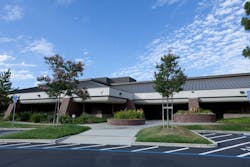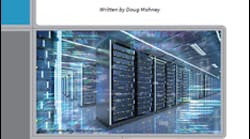Ben Garrard, Vice President of Product Management at CoreSite, takes a deep dive into the changing landscape of power supply in today’s data centers.
Ben Garrard, Vice President of Product Management, CoreSite
Global data center power use has been generally flat, growing 6% between 2010 to 2018. While data storage and processing activity has increased at a significantly higher rate, power use growth has been offset through energy efficiency gained by the dramatic shift of compute workloads from legacy data centers to newer, significantly more efficient, enterprise-class colocation campuses and hyperscale cloud data centers. The increasing amount of data produced, computed and transmitted for a growing number and scope of use cases – artificial intelligence, data analytics, gaming, streaming content and connected devices – has and will continue to persistently drive increased demand for power as the related use cases generally improve living standards.
As businesses continue to adopt hybrid cloud architectures, they will need colocation services that can scale up or down to accommodate changing requirements, new use cases and new product opportunities (both the products they deploy and those they use). More large scale data centers are being built, and existing data centers retrofitted, to meet the growing market need – increasing and concentrating demand on power grids.
As total energy demand outpaces efficiency gains, curtailing carbon emissions is increasingly important. With more than 60% of the U.S.’s electricity still coming from fossil fuels, responsible enterprises try to do more to manage costs and limit as much as is in their power any related carbon emissions. Where local regulations and options exist, data center operators are proactively working to do more for overall societal sustainability goals.
In locations like the Bay Area in Northern California, where power comes at a premium and it is difficult for non-utilities to wheel in non-carbon power cost-effectively meeting sustainability goals is even more challenging.
Fuel Cell Technology + Local Energy Agency = Greener Business Practices
Traditional sources of renewable energy, such as wind and solar, still dominate the sustainable energy sector, but the challenge with these sources is that they can’t be readily dispatched or imported. This means power from these sources isn’t always available to meet demand in a specific locale — a huge disadvantage in a business like colocation, which guarantee power availability and generally have constant power requirements.
Companies strive to balance employee, customer and community concerns with delivering good returns for shareholders. Businesses are not sustainable if their communities and the broader world are not.
These particular renewable energy sources are also dependent on outside factors. For example, wind is often variable, peaking at different times of the day while solar reaches peak output only at mid-day, making it harder to accommodate round-the-clock workloads like those typical for colocation. Power and cooling are the top priorities at every data center, so reliable energy generation is key to delivering quality performance and uptime, as well as meeting SLA conditions.
Reliable, high-efficiency fuel cell technology isn’t dependent on outside factors. (Image: Bloom Energy)
Reliable, high-efficiency fuel cell technology isn’t dependent on outside factors. The solid oxide fuel cells reliably generate energy onsite without burning fossil fuels. Fuel cells can be powered by either natural or biogas fuel sources, based on availability, costs, and which one best fits the evolving business demands of a company – and they deliver power nearly 70% more efficiently and emit nearly 25% lower emissions than even clean natural gas power plants.
At SV2, CoreSite also works closely with a local sustainable energy agency, Silicon Valley Clean Energy (SVCE). A community-owned agency like SVCE can provide locally sourced clean energy choices — such as renewable and 100% carbon-free electricity from wind, solar and hydro — at market rates, helping to reduce greenhouse gas emissions without passing exorbitant costs onto customers. SVCE, in particular, reinvests net revenues into the community to help meet local climate goals ahead of California’s 2030 goal of reducing greenhouse gas emissions by 40% below 1990 levels.
Setting the Course for a Sustainable Future
Companies strive to balance employee, customer and community concerns with delivering good returns for shareholders. Businesses are not sustainable if their communities and the broader world are not. Even though most major policy factors are outside the control of private sector companies, those companies are frequently in a better position than many to innovate and work with other community members to make improvements which benefit all, while continuing to deliver cost-effective options to customers and good returns to shareholders.
With concerns and initiatives around climate change reaching a critical new level, the colocation industry hopes for broader energy innovation in both technology and policy, examining all potential options from carbon capture and sequestration to advanced nuclear. But the industry also has to continue to look for its own innovative ways to reduce carbon emissions.
By combining the latest in fuel cell technology with clean energy provided through a local entity, the eco-friendly data center generates more sustainable energy without increasing the cost burden for its customers.





